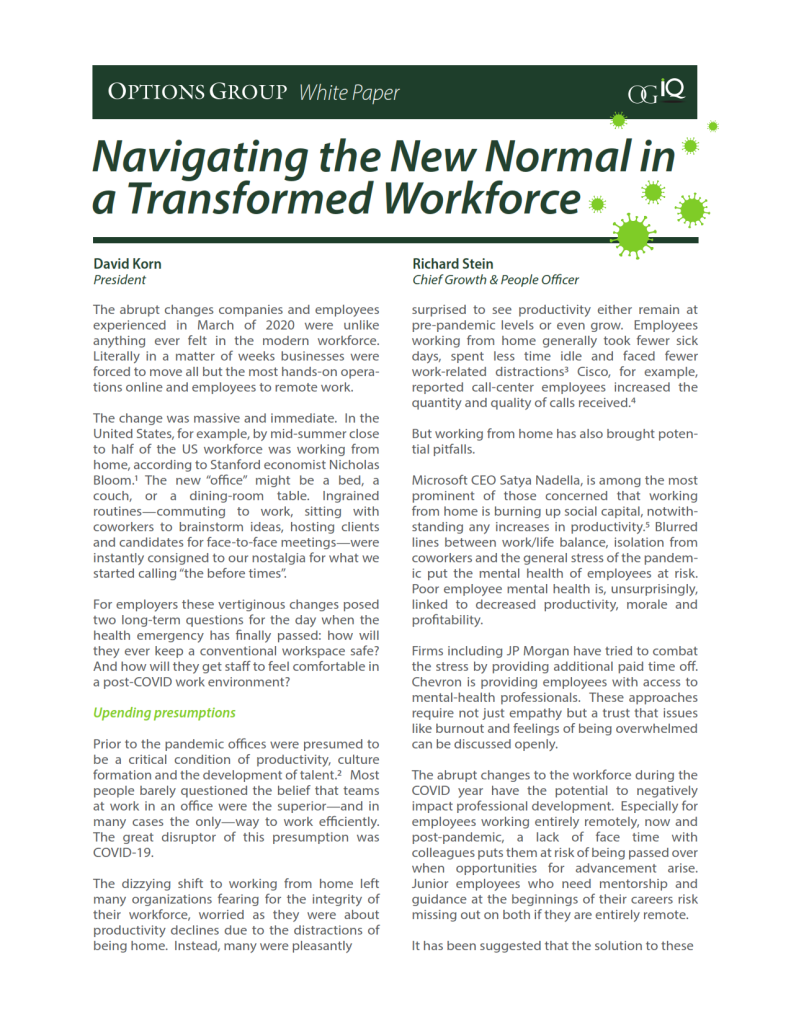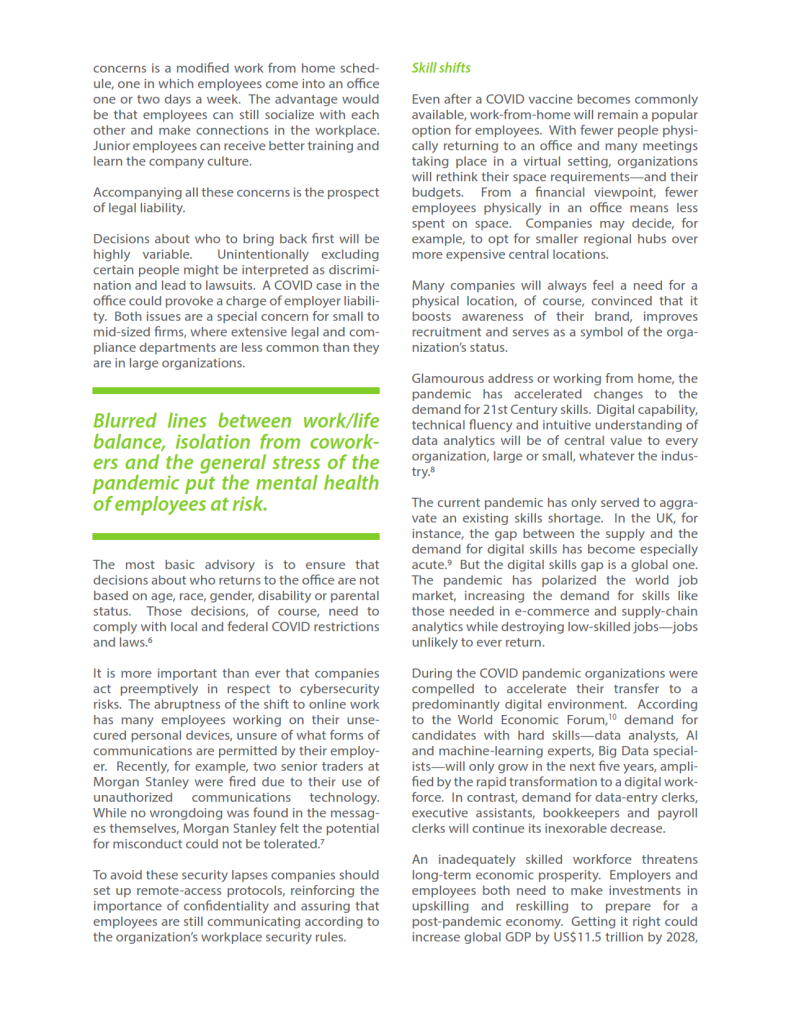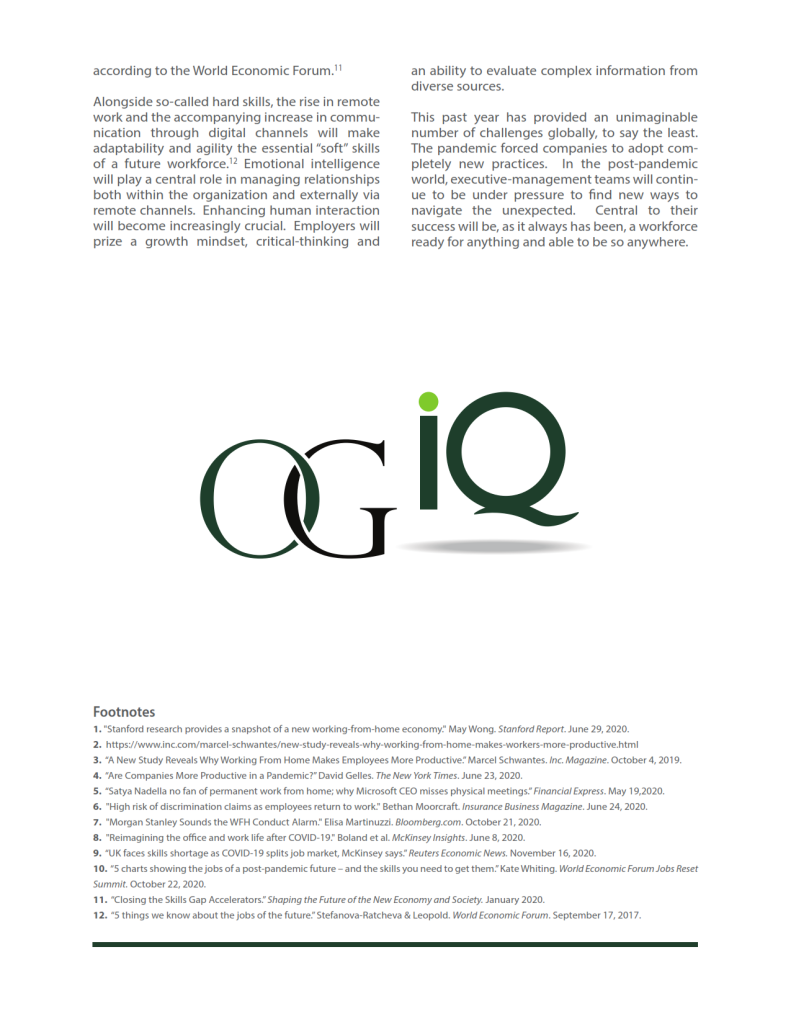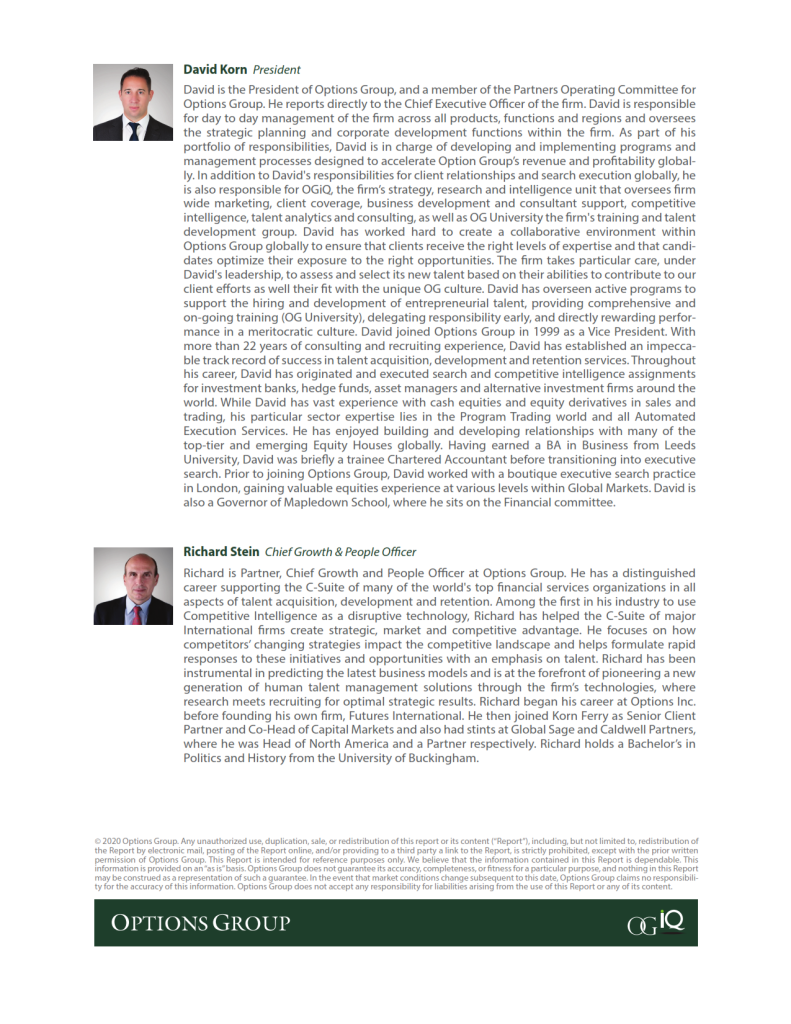Navigating The New Normal
The abrupt changes companies and employees experienced in March of 2020 were unlike anything ever felt in the modern workforce.
Literally in a matter of weeks businesses were forced to move all but the most hands-on operations online and employees to remote work. The change was massive and immediate. In the United States, for example, by mid-summer close to half of the US workforce was working from home, according to Stanford economist Nicholas Bloom. The new “office” might be a bed, a couch, or a dining-room table. Ingrained routines – commuting to work, sitting with coworkers to brainstorm ideas, hosting clients and candidates for face-to-face meetings – were instantly consigned to our nostalgia for what we started calling “the before times”. For employers these vertiginous changes posed two long-term questions for the day when the health emergency has finally passed: how will they ever keep a conventional workspace safe? And how will they get staff to feel comfortable in a post-COVID work environment?



